When it comes to relieving stress, enhancing relaxation, and promoting overall wellness, few practices are as effective and culturally rich as the Indian head massage. Known traditionally as Champissage, this therapeutic technique has gained popularity worldwide for its profound ability to relax the mind, rejuvenate the body, and soothe the spirit.
In this comprehensive guide, we explore everything you need to know about Indian head massage—including its origins, techniques, health benefits, precautions, and how to incorporate this powerful Ayurvedic head therapy into your daily life.
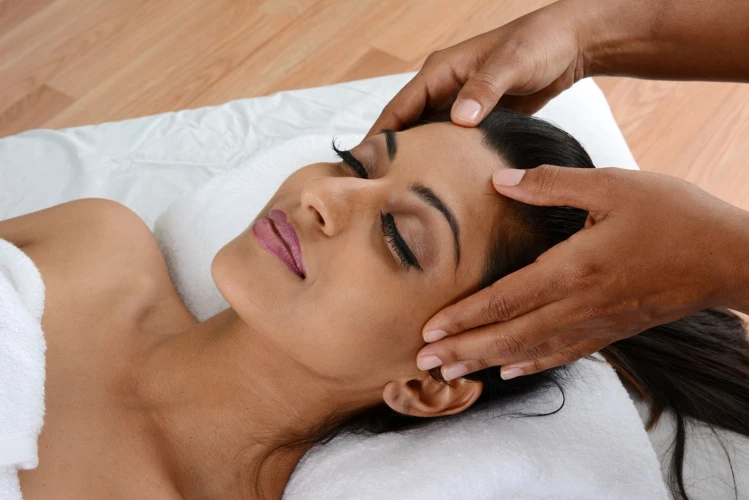
🕉️ The Origins of Indian Head Massage
Indian head massage has roots in Ayurveda, the traditional Indian system of medicine that dates back over 4,000 years. The term Champissage is derived from the Hindi word champi, meaning head massage. Originally passed down through generations, it was commonly practiced by Indian mothers to encourage hair health, mental clarity, and family bonding.
Narendra Mehta introduced the practice to Western audiences in the 1970s, developing it into a formal therapeutic system. Since then, Champissage has become a staple in spas, salons, wellness centers, and homes around the world.
In India, this massage is more than just a wellness treatment—it’s a ritual. Many households practice it before exams or major life events. It’s also a standard feature at Indian barbershops and is often included in pre-wedding rituals to calm nerves and promote positive energy.
🧘♂️ What Is Indian Head Massage?
Indian head massage is a seated treatment that focuses on the upper body—scalp, neck, shoulders, and upper back. Unlike full-body massage therapies, this treatment can be performed with the client fully clothed and typically requires no massage table.
This type of Indian massage therapy involves:
- Circular motions on the scalp
- Gentle pressure on energy points (Marma points)
- Rhythmic shoulder kneading
- Soothing strokes along the neck and arms
These techniques aim to improve circulation, reduce muscular tension, and clear blockages in energy flow, according to Ayurvedic principles.
🌿 Step-by-Step Guide to a Champissage Session

Here’s what a typical Indian head massage treatment involves:
1. Shoulders and Upper Back
The therapist begins with gentle kneading and squeezing to release built-up tension, especially in individuals who work at desks or carry emotional stress in their shoulders.
2. Neck Work
Using upward strokes and circular motions, the practitioner loosens stiff neck muscles. This can alleviate “tech neck” caused by frequent screen use.
3. Scalp Stimulation
Fingertips are used in small circles across the scalp to stimulate nerves, improve blood flow, and relax the mind. A gentle pulling of the hair may also be incorporated to stretch the scalp tissue.
4. Temples and Forehead
This part uses light tapping or smoothing over the temples and forehead, relieving headaches, eye strain, and emotional tension.
5. Final Rebalancing
The session ends with broad, flowing strokes down the shoulders and arms, encouraging energetic integration and overall calm.
Optional oils such as coconut, sesame, or amla may be used to enhance the experience and nourish the scalp.
🧪 Scientific Support for Indian Head Massage
While more research is still needed, existing studies have shown promising results:
- A 2016 study in the Journal of Alternative and Complementary Medicine showed that scalp massage can significantly reduce cortisol (a stress hormone) and elevate mood.
- A 2005 study in the International Journal of Neuroscience found that massage therapy boosts serotonin and dopamine, improving emotional well-being.
- Another study showed that head massage may improve heart rate variability, suggesting better nervous system resilience.
These findings support what practitioners of Champissage have known for centuries: it works.
💆♀️ Key Benefits of Indian Head Massage Treatment
Indian head massage treatment is more than a relaxing experience—it’s a holistic approach to wellness that aligns with traditional Indian massage therapy principles.
✅ Reduces Stress and Anxiety
✅ Improves Sleep Quality
✅ Boosts Mental Focus and Clarity
✅ Relieves Headaches and Migraines
✅ Promotes Scalp and Hair Health
✅ Enhances Lymphatic Drainage
✅ Soothes TMJ and Facial Tension
✅ Balances Energy Flow via Marma Points
🧴 Best Oils for Ayurvedic Head Therapy
While oil is optional, these traditional Ayurvedic oils enhance the effects:
- Coconut Oil – Cooling, hydrating, great for summer
- Sesame Oil – Warming, grounding, ideal for dry skin
- Amla Oil – Stimulates hair growth and improves scalp condition
- Brahmi Oil – Supports mental clarity and memory
These oils may be gently warmed before application for maximum absorption and relaxation.
🧑⚕️ Who Should (and Shouldn’t) Try It
✅ Great For:
- Desk workers and professionals
- Students
- Individuals with insomnia or brain fog
- People seeking hair and scalp care
⚠️ Use Caution If You Have:
- Recent head or neck injury
- Scalp infections
- Blood clotting disorders
- Epilepsy
- First-trimester pregnancy
👩💼 Where to Find Indian Head Massage
- Spas and Wellness Clinics – Offered as a standalone or combo treatment
- Salons – Often paired with hair treatments
- Yoga and Meditation Retreats – Enhances focus and energy balance
- Corporate Wellness Programs – Delivered onsite as stress relief sessions
Sessions range from 15-minute express options to 45-minute in-depth treatments.
📊 Comparison Table
| Massage Type | Focus Area | Pressure | Oils Used | Duration | Best For |
|---|---|---|---|---|---|
| Indian Head Massage | Head, neck, shoulders | Light-Med | Optional | 30–45 min | Stress, sleep, hair health |
| Swedish Massage | Full body | Light | Yes | 60–90 min | Relaxation, muscle recovery |
| Thai Massage | Full body (w/ stretch) | Firm | No | 60–90 min | Flexibility, energy flow |
🏠 How to Do It at Home
You can perform a self-massage or ask a loved one for help:
- Find a quiet space and play relaxing music
- Warm a small amount of oil (optional)
- Begin with circular scalp motions using your fingertips
- Massage temples, forehead, and back of the neck
- End with shoulder and upper back kneading
Even five minutes can make a noticeable difference in mood and energy.
❓ FAQs About Indian Head Massage
Do I need to use oil?
No. Oils are optional but recommended for added benefits.
Is it safe for kids and seniors?
Yes, with gentle pressure.
Can it help with screen-related tension?
Absolutely—it’s ideal for tech neck and eye strain.
How often should I get one?
Weekly for chronic stress or scalp issues, monthly for maintenance.
Can I do it after coloring my hair?
Yes, but wait at least 24 hours.
Is it claimable under health insurance?
Sometimes—check with your provider if offered by a certified therapist.
Is there a spiritual component?
Yes. Some consider it a way to balance energy and connect body and mind.

🔄 Integrating Indian Massage Therapy Into Daily Life
For those exploring Indian massage therapy as part of a natural health routine, regular Champissage sessions can have cumulative effects.
Many people incorporate Indian head massage into their weekly self-care routine. Try:
- Morning scalp stimulation to energize your mind
- Midday neck and temple massage for focus
- Evening ritual with warm oil to wind down
Over time, this becomes more than a treatment—it’s a lifestyle of mindful care.
🌍 How Indian Head Massage Differs from Other Ayurvedic Therapies
Indian head massage is just one of many traditional therapies in the Ayurvedic system, each with its own focus and method. Here’s how it compares to other Indian massage therapies:
- Abhyanga – A full-body oil massage using synchronized strokes from two therapists. While Abhyanga treats the entire system, Indian head massage concentrates on the upper body and head.
- Shirodhara – Involves the continuous pouring of warm oil over the forehead to calm the nervous system. Indian head massage, on the other hand, uses manual pressure and strokes.
- Kati Basti – Focuses on the lower back, using a dam of dough filled with warm medicated oil. It’s designed for spinal support and sciatica relief, whereas Indian head massage supports mental clarity and scalp health.
Understanding these differences allows you to choose the right therapy based on your health goals.
❓ Additional FAQs
Can I combine Indian head massage with other treatments?
Yes. It pairs well with facials, Swedish massage, or foot reflexology.
What’s the best time of day to get a session?
Morning for energy or evening for relaxation—whenever stress peaks for you.
Is it safe during breastfeeding or postpartum?
Yes, with your doctor’s approval. It can ease fatigue and emotional stress.
Can it trigger an emotional release?
Yes. Releasing stored tension in the head and shoulders may cause tearfulness or a sense of emotional relief.
Does it have spiritual benefits?
For some, yes. It’s used in energy balancing and can help align your crown chakra.
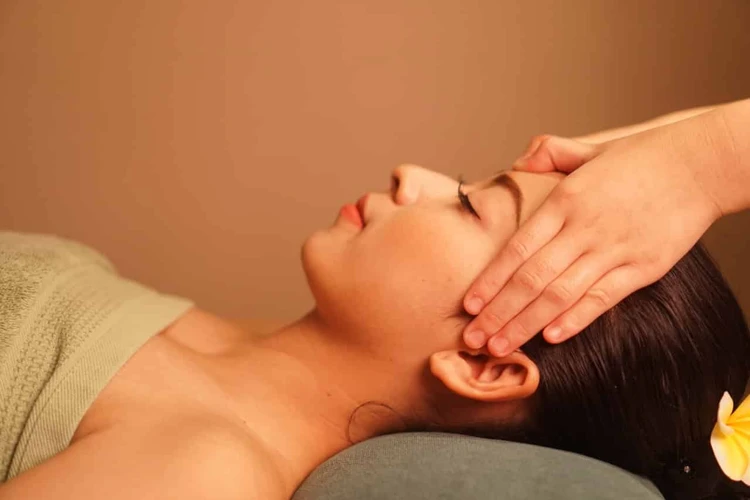
🌐 Champissage in Global Wellness Culture
Indian head massage has found its way into Western spas, wellness retreats, and even ASMR culture on platforms like YouTube. Practitioners around the world incorporate it into:
- Mindfulness retreats – for mental clarity
- Yoga teacher training – to balance energy after intense practice
- Corporate wellness programs – as stress-relieving seated sessions
Its accessibility and adaptability have made it a global wellness favorite. You can even find online tutorials and guided sessions that bring the magic of Champissage to your home.
🧠 Conclusion: Embrace the Wisdom of Champissage
Indian head massage offers a powerful blend of tradition, science, and self-care. Whether you’re looking to reduce anxiety, improve sleep, or simply indulge in restorative touch, this ancient Indian massage therapy delivers.
Try incorporating Indian head massage treatment into your wellness routine and feel the deep benefits of Champissage—an Ayurvedic practice that truly stands the test of time.
👉 Explore more healing practices:
- Learn the benefits of Swedish massage therapy and how it compares to Indian head massage.
- Discover Thai massage benefits and how Thai techniques differ from Ayurvedic head therapy.
Your wellness journey begins with a single, soothing touch.
📚 References
- Healthline: Indian Head Massage
- Mindbodygreen: The Complete Guide to Indian Head Massage
- International Journal of Neuroscience – Massage Therapy and Biochemical Indicators of Stress
- National Ayurvedic Medical Association (NAMA) – Ayurvedic Therapies
- Johns Hopkins Medicine – Complementary and Integrative Medicine
⚠️ Disclaimer:
This article is for informational purposes only and does not constitute medical advice. Always consult with a licensed healthcare provider or certified massage therapist before beginning any new treatment, especially if you have pre-existing health conditions or concerns.


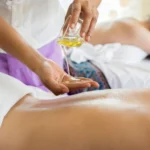
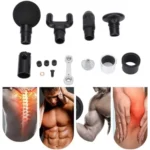

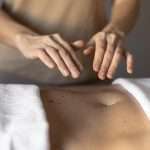
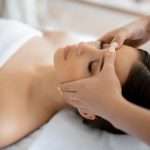

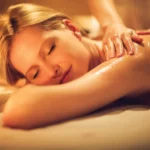


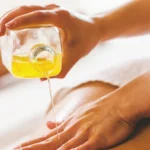

I enjoy your writing style, genuinely loving this site.